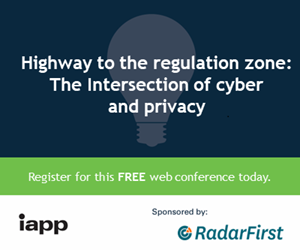Zoë Strickland and Chuck Chamberlain
Authentication is not simply the procedure used to confirm the right of a party to use an identity, and authentication is more than photo ID cards, notarized seals, passwords, biometric techniques, smart cards, or digital certificates. To be truly trusted, authentication should go further than simple user identification.
The goal of authentication in a trusted transaction is to reduce the risks to privacy and security inherent in the basic attributes of authentication: who, what, when, where, why, and how.
- Who verifies the online identities of parties to a transaction in order to control access and accountability.
- What verifies the content of a transaction in order to confirm that it is original and unchanged.
- When verifies a sequence of events, including whether actions were taken prior to a deadline or the exact historical time and date of a transaction, in order to establish the legal time or sequence of the transaction.
- Where verifies the legal location of the transaction to establish jurisdictional and policy coverage.
- Why verifies the reason for which the transaction is taking place in order to permit certain actions such as concurrence with the transaction, suggestion of changes, disagreement with the transaction content, or requests for specific actions.
- How verifies the procedures under which the transaction was created, stored, encrypted, transmitted, or confirmed.
Each attribute has its own privacy and security risks.
- Who includes the risk of unauthorized activities occurring under a person's name and losing personal information via unauthorized access.
- What includes the risk of inaccurate information being used (due to either accidental or deliberate alteration), which may result in incorrect decisions and possible losses.
- When includes the risk of being unable to specify an exact time a transaction occurred, which may be needed for many purposes (e.g., deadlines, legal requirements, etc.).
- Where includes the risk of not being able to establish needed jurisdiction, or the ability to take corrective measures if there are problems with the transaction or legal and/or privacy violations.
- Why includes the risk of a transaction not being eligible for coverage under statutes such as E-Sign.
- How includes the risk of insufficient accountability for the transaction or privacy violations, creating an environment where transactions cannot be trusted.
The Postal Service has recently introduced two services specifically configured to support the level of authentication needed for trusted transactions: Electronic Postmark® (EPM) and In-Person Proofing (IPP). The services can work either independently or together to bring a higher level of authentication for trusted transactions.
When implemented as part of an electronic messaging system, the U.S. Postal Service Electronic Postmark (USPS EPM) can become the electronic equivalent of an analog postmark. This service enables users to verify any electronic transaction. The Electronic Postmark is a Web-based service that supplies content authentication and trusted time stamps. Every e-mail message with a USPS EPM contains a time and date stamp from a secure USPS EPM server. The USPS EPM hash record of a file's contents enables the customer to verify the hash of any electronic transaction against the stored hash code to prove authenticity. EPM validates the original contents (what) and the exact time (when) of any digital file. The EPM also helps to establish the jurisdiction for the transaction (where).
In-Person Proofing delivers an additional attribute of authentication for issuing digital certificates to new users. Under the program, a provider of digital certificates will require a user to verify their identification in person at a post office prior to being issued a certificate. IPP requires a user to provide two credentials, such as a state driver's license and government issued ID or passport, at a participating post office. The Postal Service then notifies the provider, who issues the digital certificate to the user. The purpose is to add further authentication features to transactions involving sensitive personal information, such as government benefits or medical records. USPS IPP establishes an authenticated identity for transactions using digital certificates (who).
The why attributes of a transaction are established by the parties and by any requirements that may apply to the transaction, such as the attestations related to signing called for by the 2000 Electronic Signatures in Global and National Commerce Act (E-Sign). The how attributes of a transaction are specific to the messaging systems being used by senders and receivers.
There appears to be widespread consensus that authentication and trusted transactions will continue to receive increasing attention. This may include technological solutions, government and industry practices, and interest from the media, federal and state legislatures, and consumer groups. The question is how we get there.
Zoe Strickland is chief privacy officer for the U.S. Postal Service. She can be reached at zoe.c.strickland@usps.gov or (202) 268-3040. Charles (Chuck) Chamberlain is manager, business development and identity protection service, marketing, U.S. Postal Service.






























Comments
If you want to comment on this post, you need to login.